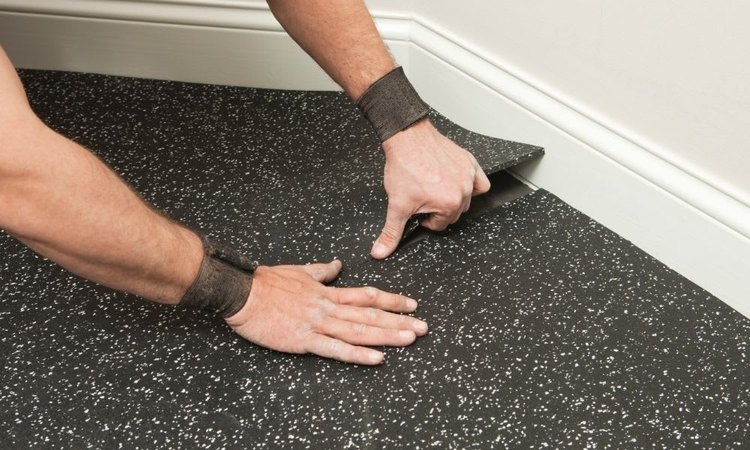Transform your garage quickly and simply with rubber garage flooring
Transforming your garage into a functional, attractive space doesn't have to be a daunting task. One of the most effective ways to upgrade your garage is by installing rubber flooring. This versatile and durable option not only enhances the appearance of your garage but also provides numerous practical benefits. In this article, we'll explore how rubber garage flooring can revolutionize your space, its advantages, and what you need to know before making the switch.

Why choose rubber flooring for your garage?
Rubber garage flooring has gained popularity among homeowners for several reasons. Its durability is unmatched, able to withstand heavy foot traffic, vehicle weight, and potential chemical spills. Unlike traditional concrete floors, rubber provides a cushioned surface that’s comfortable to walk and stand on for extended periods. Additionally, it offers excellent slip resistance, making it a safer option for wet or oily conditions often found in garages. The noise-reducing properties of rubber flooring also make it an ideal choice for those who use their garage as a workshop or exercise area.
What types of rubber garage flooring are available?
When it comes to rubber garage flooring options, you have several choices to consider. Roll-out mats are a popular and easy-to-install option, perfect for covering large areas quickly. Interlocking tiles offer flexibility and are great for customizing your layout or working around obstacles. For a more permanent solution, poured-in-place rubber flooring provides a seamless finish. Each type has its advantages, so consider your specific needs, budget, and installation preferences when making your selection.
How easy is it to install rubber garage flooring?
One of the main advantages of rubber garage flooring is its relatively simple installation process. Many homeowners find they can complete the project themselves, saving on professional installation costs. Roll-out mats and interlocking tiles are particularly DIY-friendly, requiring minimal tools and expertise. Poured-in-place rubber flooring, while more complex, can still be manageable with proper preparation and following manufacturer guidelines. However, if you’re unsure about your DIY skills or have a large or complex garage layout, it may be worth consulting with a professional installer to ensure the best results.
What maintenance is required for rubber garage flooring?
Maintaining rubber garage flooring is straightforward, making it an attractive option for busy homeowners. Regular sweeping or vacuuming to remove dirt and debris is usually sufficient for day-to-day care. For deeper cleaning, a damp mop with a mild detergent solution can effectively remove most stains and spills. Unlike concrete, rubber flooring doesn’t require sealing or special treatments to maintain its appearance and functionality. This low-maintenance aspect contributes to its long-term cost-effectiveness and appeal.
How does rubber flooring impact garage aesthetics?
In the United Kingdom, where garages often serve multiple purposes beyond just parking vehicles, the aesthetic appeal of rubber flooring can significantly enhance the space. Rubber flooring comes in a variety of colours and patterns, allowing you to customise the look of your garage to match your personal style or complement your home’s exterior. Some homeowners opt for a classic black or grey finish for a sleek, professional look, while others choose bold colours or patterns to create a more vibrant atmosphere. This versatility in design makes rubber flooring an excellent choice for those looking to create a more inviting and personalised garage space.
What are the costs associated with rubber garage flooring?
When considering rubber garage flooring, it’s important to understand the associated costs. The price of rubber flooring can vary significantly based on the type, quality, and quantity needed. Here’s a breakdown of average costs for different rubber flooring options in the UK:
| Type of Rubber Flooring | Average Cost per m² | Installation Complexity |
|---|---|---|
| Roll-out Mats | £20 - £40 | Low |
| Interlocking Tiles | £25 - £50 | Low to Medium |
| Poured-in-place Rubber | £50 - £100 | High |
Prices, rates, or cost estimates mentioned in this article are based on the latest available information but may change over time. Independent research is advised before making financial decisions.
While the initial cost of rubber garage flooring may be higher than some alternatives, it’s essential to consider the long-term value. The durability, low maintenance requirements, and potential increase in property value can offset the upfront investment over time. Additionally, the comfort and safety benefits provided by rubber flooring can make it a worthwhile choice for many homeowners.
In conclusion, rubber garage flooring offers a quick and simple way to transform your garage into a more functional, attractive, and comfortable space. With its durability, ease of installation, low maintenance requirements, and aesthetic versatility, it’s an excellent option for UK homeowners looking to upgrade their garage floors. By carefully considering your specific needs, budget, and the various options available, you can choose the right rubber flooring solution to revitalize your garage and enhance its usability for years to come.




